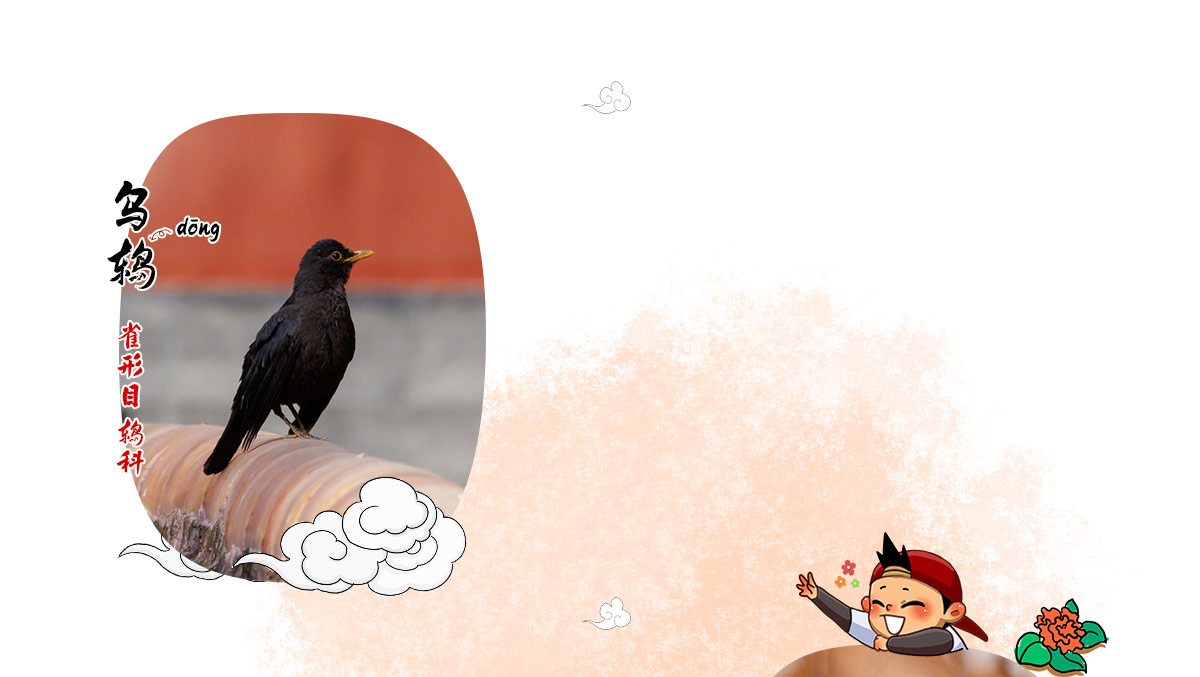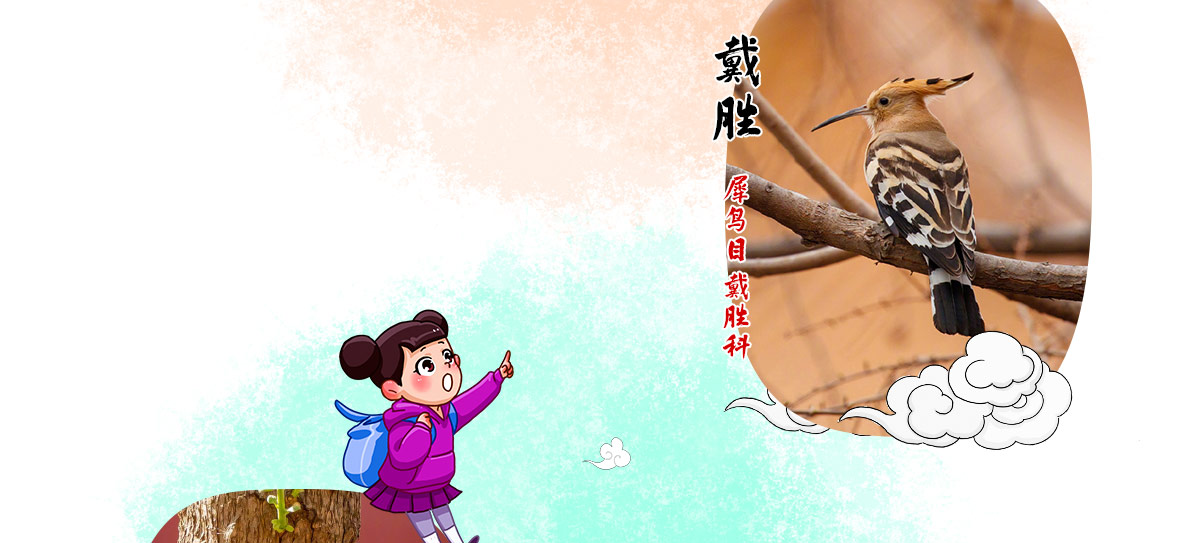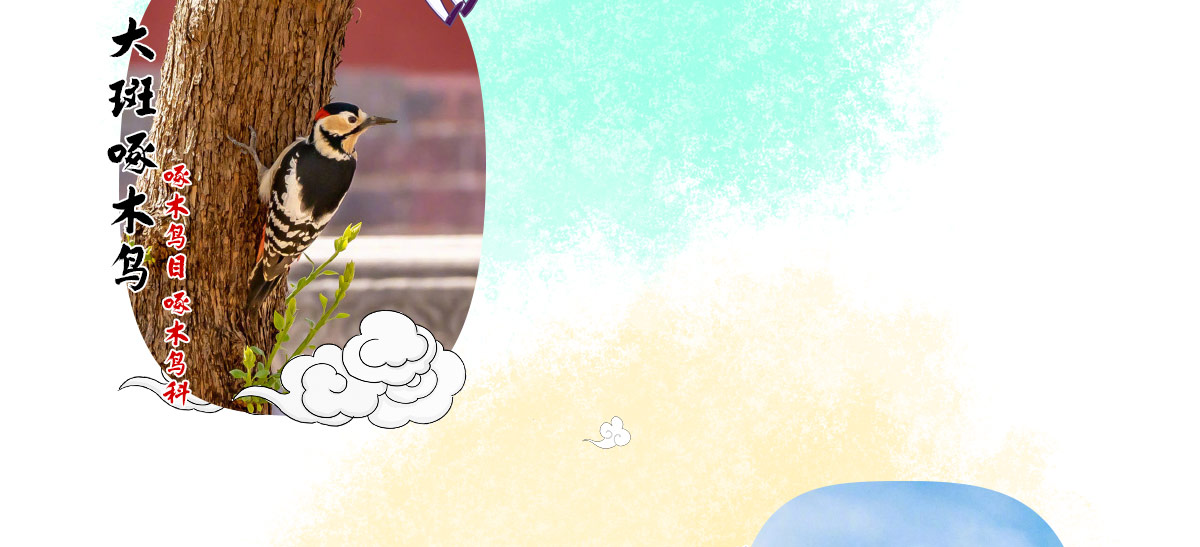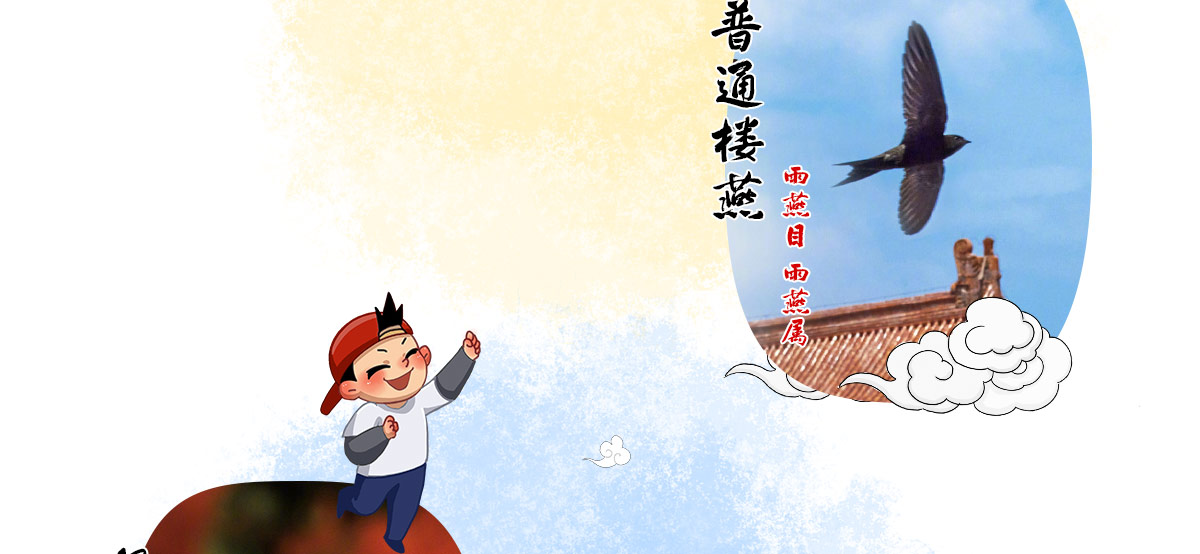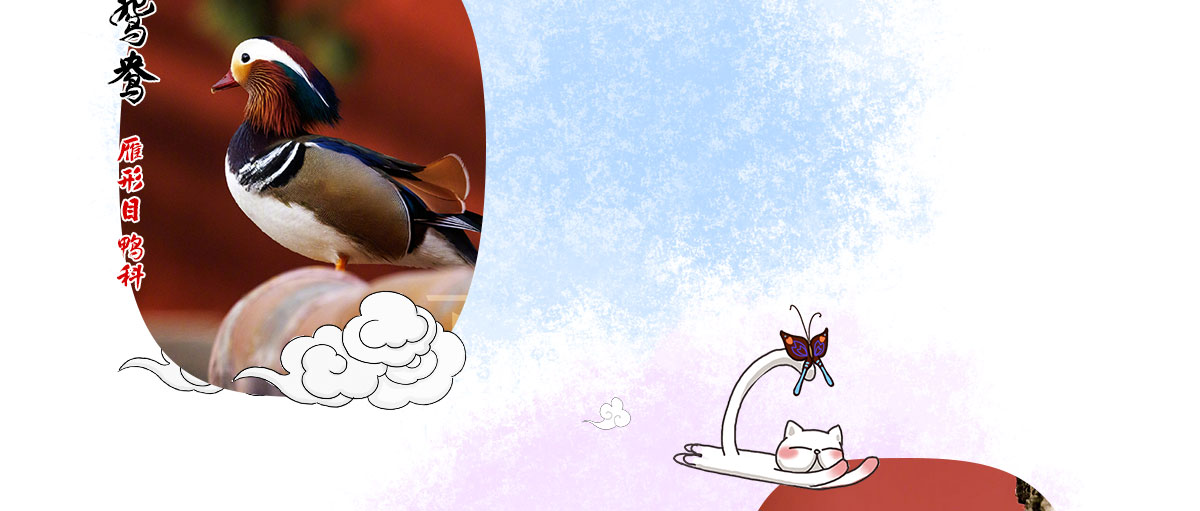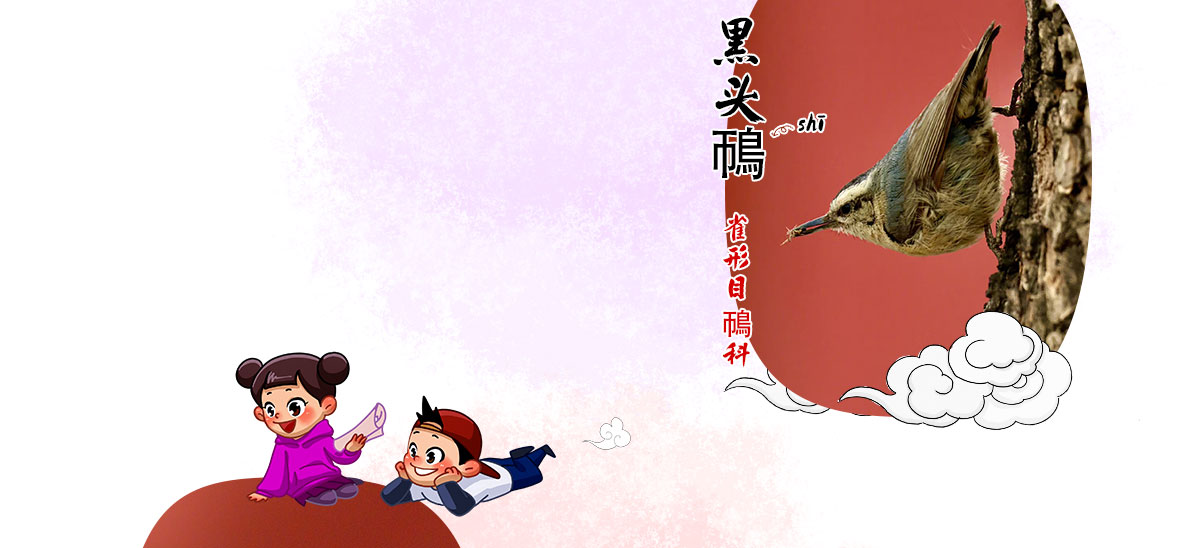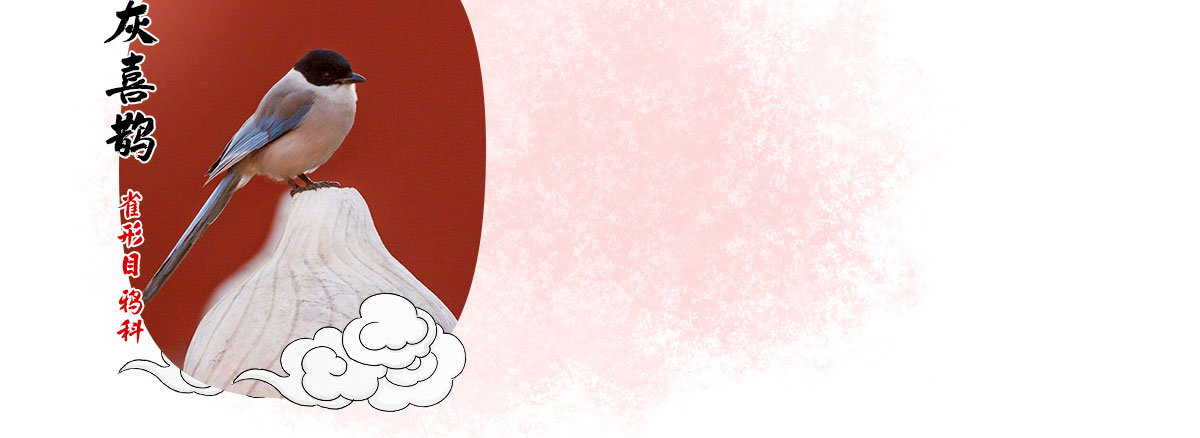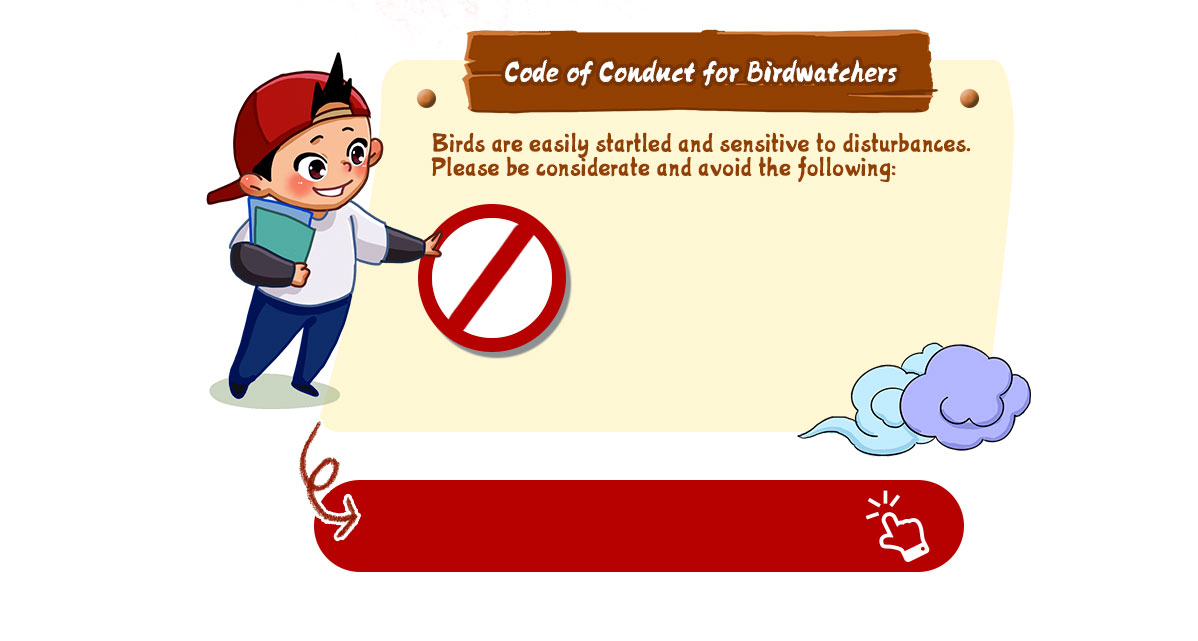Who dives from tall buildings in beautiful arcs? Who strolls across open lawns on the hunt for food? Who makes that rhythmic tapping sound in the dense tree shade? Who splash around in pairs in the water? The Palace Museum, in partnership with the Vanke Foundation, presents the “Zero Waste in the Palace Museum” bird knowledge series. Let’s discover the feathered friends of the Palace Museum!
The common blackbird is one of the commonest birds to spot at the Palace Museum during spring. Its song is loud and melodious, especially varied in spring. Ancient Chinese people called them “hundred tongues” because they thought these birds could imitate the sounds of a hundred different bird species. If you’re lucky, you might even spot one playing tug-of-war with a worm on the lawn!
◆ About 29 cm long
◆ All-black body with a bright yellow beak and yellow rings around the eyes
◆ Female and baby birds have dark brown feathers with black beaks and no yellow eye-rings
Difficulty to spot: ★★
The hoopoe is one of the most striking birds in the Palace Museum, with its beautiful crest on top of its head. People often mistake hoopoes for woodpeckers, but their long, thin beaks aren’t made for pecking wood. Instead, they use their beaks like a probe to search for food in the soil and cracks.
◆ 25-31 cm long
◆ Its Chinese name “Daisheng” (literally, “wearing headdress”) comes from its crest that resembles an ancient female headdress
◆ A long, thin beak
◆ Head, chest, belly, and upper back are pinkish-brown, with black and white stripes on the wings and tail
Difficulty to spot: ★★
The great spotted woodpecker is the second-largest woodpecker in the Palace Museum. It can often be heard before it is seen tapping on tree trunks to find insects under the bark. It flies slowly in a wave-like pattern. During the breeding season from April to July, the male produces a rapid drumming sound by pecking on trees. Each year, they carve a new hole as their nest, with both parents taking turns to incubate their eggs and raise the baby birds.
◆ 20-25 cm long
◆ Mostly black and white, with white cheeks, neck, throat, chest, and belly
◆ Wings have large white patches
◆ Males have a red patch on the back of the head, and females do not
◆ Males drum on tree trunks during the breeding season from April to July
Difficulty to spot: ★★★
Also known as the Beijing swift, this species of bird loves nesting in tall, old buildings. They chirp loudly while flying and are usually seen in flocks. Like other swifts, they cannot take off from the ground and must dive from high places to start flying. This is why, when rescuing and releasing them, people avoid throwing them from the ground to prevent injury. In summer, keep an eye on the sky in the Palace Museum, and you might spot them!
◆ 16-19 cm long
◆ Slightly larger than swallows, with narrow and long wings
◆ Almost all black-brown; wings curve back like a scythe in flight
◆ White throat and chest separated by a dark brown stripe
Difficulty to spot: ★
Ancient Chinese believed mandarin ducks mated for life, symbolizing fidelity in love. They’re excellent swimmers and divers, and can walk well on land too. Besides water activities, they often forage on land. They are very alert and will fly away immediately if disturbed, making a sharp “oh-er” sound. They return to Beijing shortly after the ice melts each year. In the Palace Museum, you can find them on or around waterways like the Tongzi River.
◆ Males have a crest and broad white eyebrow stripe behind the eye, with orange sail-like feathers on the wings when folded. Their chest and belly are white, and their flanks are light brown.
◆ Females are gray-brown, with a white ring around the eye and a white stripe behind the eye, and lack the sail-like feathers on the wings. Their chest and flanks have dark brown scaly patterns.
Difficulty to spot: ★★★★
Chinese nuthatch is a cute, lovely bird unique to China. In their quest for insects and seeds in the bark crevices, they hop up and down tree trunks. The breeding season is from late April to May. They nest in tree holes, either pecking a hole by themselves or repurposing woodpecker nests. Their nests are made of tree bark and lined with animal hair and bird feathers. They lay one clutch of four to nine eggs each year. You might spot them drinking water near the “eco-compost flower bed” on the east side of Jianting Square in the Palace Museum.
◆ About 11 cm long
◆ Mostly bluish-gray. Males have a black crown
◆ Females have a gray crown and a pale purple-gray upper body
◆ White throat and cheeks, yellowish-white eyebrow, grayish-yellow or yellowish-brown underparts
Difficulty to spot: ★★★
The azure-winged magpie is one of the commonest birds in Beijing’s parks. They fly quickly and can glide silently for long distances. They usually nest in medium-height trees like poplars, crabapple trees, elms, and young pines. Their nests are simple, with a shallow dish or platform shape, and are mainly made of thin dry branches mixed with grass stems, leaves, moss, and animal hair. The azure-winged magpie is smaller than the oriental magpie. While the oriental magpie moves on the ground by walking, much like a crow, and occasionally hops forward, the azure-winged magpie typically hops like a sparrow and rarely walks. You can find them in almost all vegetated areas of the Palace Museum!
◆ About 35 cm long
◆ Overall light blue, with sky-blue wings, a long blue tail, and black crown, ear coverts, and nape
◆ Similar to Oriental magpies but smaller in size
Difficulty to spot: ★
◆ Wearing bright or reflective clothing
◆ Using flash photography when taking pictures of birds
◆ Playing recorded bird calls or using electronic devices to attract birds
◆ Clearing away any natural cover around the bird’s nest to get photos
